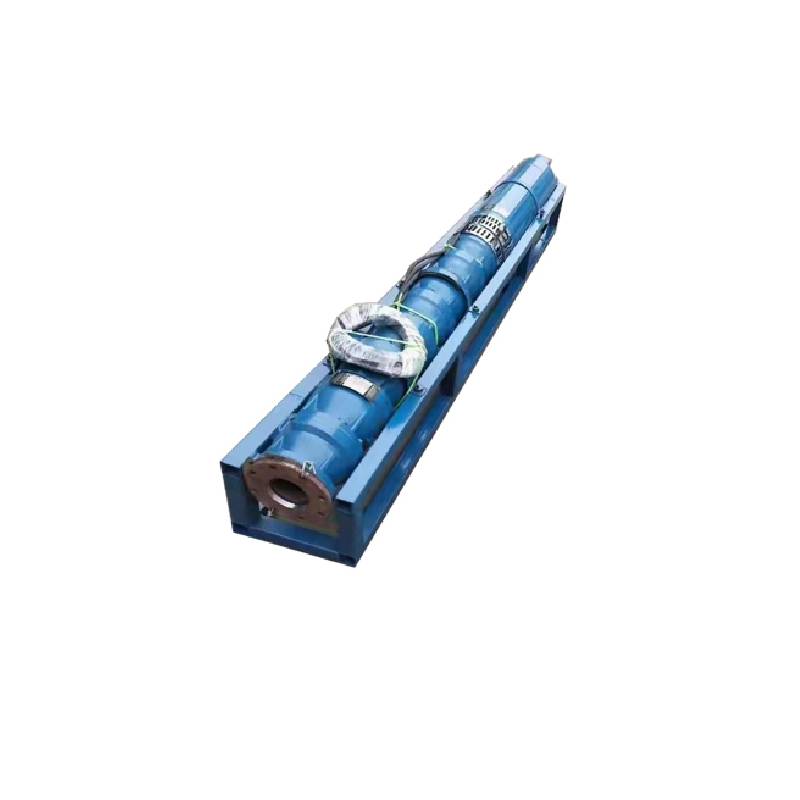Sep . 30, 2024 12:09 Back to list
Guidelines for Replacing Submersible Well Pumps Efficiently and Effectively
Replacement of Submersible Well Pumps A Comprehensive Guide
Submersible well pumps are a vital component of water systems, especially in rural areas where groundwater extraction is necessary for various purposes, including irrigation, drinking water, and industrial use. Over time, these pumps may encounter wear and tear or suffer from mechanical failures due to continuous operation. When this happens, replacement becomes an essential task to ensure a steady supply of water. In this article, we will discuss the process, considerations, and best practices for replacing submersible well pumps.
Understanding Submersible Well Pumps
A submersible well pump is designed to operate underwater, typically placed deep within a well. It consists of a motor that drives a pump impeller, enabling it to move water efficiently to the surface. Because of their submerged design, these pumps are often more efficient than other types of pumps and are capable of operating at greater depths. However, exposure to harsh conditions and sediment can lead to failures, requiring timely replacement.
Signs of Pump Failure
Before deciding to replace a submersible well pump, it is crucial to recognize the signs of potential failure. Common indicators include
1. Reduced Water Flow A noticeable drop in water pressure or flow rate can indicate pump wear or blockages. 2. Unusual Noises Grinding, banging, or humming noises can suggest mechanical issues within the pump. 3. Frequent Cycling If the pump frequently turns on and off, it may reflect problems with pressure switches or the pump itself. 4. Discoloration or Contamination of Water Sediment or discoloration in the well water can signify pump damage or a need for maintenance.
The Replacement Process
When it has been determined that a submersible well pump needs to be replaced, follow these steps to ensure a successful installation
1. Determine the Right Size and Type It is essential to select a replacement pump that matches the specifications of the old one, including size, horsepower, and flow rate. Consider consulting a professional or reference materials for guidance.
submersible well pump replacement

3. Power Down and Disconnect Before any physical work begins, ensure the power to the pump is turned off. Disconnect the pump from the power source and other connections, such as piping and water lines.
4. Remove the Old Pump Using a hoist or winch, gently pull the pump from the well. It may require some effort if it has been in place for a long time.
5. Install the New Pump Lower the new submersible pump into the well carefully. Make sure all connections are secure, including electrical, water lines, and any protective casing.
6. Power On and Test After everything is reconnected, restore power to the system and monitor the newly installed pump. Check for proper operation, flow rates, and any unusual noises.
Maintenance Tips
Once the new submersible well pump is in place, regular maintenance can extend its lifespan. Here are a few tips
- Monitor Water Quality Regularly check for contaminants in the water supply. - Inspect Electrical Connections Periodically ensure that the electrical connections remain secure and free from corrosion. - Schedule Professional Inspections Consider having the system evaluated by a professional every few years to catch potential issues early.
Conclusion
Replacing a submersible well pump is a significant investment in maintaining a reliable water supply. By understanding the signs of pump failure, following a structured replacement process, and implementing regular maintenance practices, property owners can ensure their well systems operate efficiently for years to come. Whether tackling the replacement independently or hiring professionals, knowledge and preparation are key to a successful outcome.
-
Submersible Water Pump: The Efficient 'Power Pioneer' of the Underwater World
NewsJul.01,2025
-
Submersible Pond Pump: The Hidden Guardian of Water Landscape Ecology
NewsJul.01,2025
-
Stainless Well Pump: A Reliable and Durable Pumping Main Force
NewsJul.01,2025
-
Stainless Steel Submersible Pump: An Efficient and Versatile Tool for Underwater Operations
NewsJul.01,2025
-
Deep Well Submersible Pump: An Efficient 'Sucker' of Groundwater Sources
NewsJul.01,2025
-
Deep Water Well Pump: An Efficient 'Sucker' of Groundwater Sources
NewsJul.01,2025
-
 Submersible Water Pump: The Efficient 'Power Pioneer' of the Underwater WorldIn the field of hydraulic equipment, the Submersible Water Pump has become the core equipment for underwater operations and water resource transportation due to its unique design and excellent performance.Detail
Submersible Water Pump: The Efficient 'Power Pioneer' of the Underwater WorldIn the field of hydraulic equipment, the Submersible Water Pump has become the core equipment for underwater operations and water resource transportation due to its unique design and excellent performance.Detail -
 Submersible Pond Pump: The Hidden Guardian of Water Landscape EcologyIn courtyard landscapes, ecological ponds, and even small-scale water conservancy projects, there is a silent yet indispensable equipment - the Submersible Pond Pump.Detail
Submersible Pond Pump: The Hidden Guardian of Water Landscape EcologyIn courtyard landscapes, ecological ponds, and even small-scale water conservancy projects, there is a silent yet indispensable equipment - the Submersible Pond Pump.Detail -
 Stainless Well Pump: A Reliable and Durable Pumping Main ForceIn the field of water resource transportation, Stainless Well Pump has become the core equipment for various pumping scenarios with its excellent performance and reliable quality.Detail
Stainless Well Pump: A Reliable and Durable Pumping Main ForceIn the field of water resource transportation, Stainless Well Pump has become the core equipment for various pumping scenarios with its excellent performance and reliable quality.Detail
